GIGABYTE GA-P67A-UD7 Review Featuring 6Gb/s RAID/USB3 Testing


Gigabyte springs into the world of Black PCB motherboards with the introduction of their latest offering in the P67 series, the GA-P67A-UD7 motherboard. This leaves only the mid-range and lower end boards using blue PCB. This motherboard utilizes the latest technology, offering massive expansion capabilities on-board. Standing out in the crowd due to the very unique black and gold color scheme, the GA-P67A-UD7 is sure to deliver.
In this article I'll be comparing the GA-P67A-UD7 motherboard against a GA-P55A-UD6 motherboard. These comparisons will include processor & memory performance, and graphics performance as well by using Crossfire with two GIGABYTE HD 5870's. This review will also show how Intel's new 6Gb/s SATA performance delivers, utilizing 3 Crucial C300 6GB/s solid state drives.
The entire P67 based motherboard series was off to a rocky start due to the B2 Intel Chipset recall, but I was already more than halfway finished with data collection for this review at the time Intel made the recall announcement. The B2 motherboard performance is not affected, and there is nothing wrong with these boards except for the SATA 3GB/s issue which invoked the recall. So, we'll venture through this review as if we were unaware that there was a recall, however, I will go into further detail on this at the end of the review.
Let's learn a little bit about GIGABYTE before we get into the review
Originally posted by GIGABYTE
Introducing the Gigabyte GA-P67A-UD7 motherboard
Features:

Product Specification:
CPUChipsetMemory
1. 4 x 1.5V DDR3 DIMM sockets supporting up to 32 GB of system memory
* Due to Windows 32-bit operating system limitation, when more than 4 GB of physical memory is installed, the actual memory size displayed will be less than 4 GB.
2. Dual channel memory architecture
3. Support for DDR3 2133/1866/1600/1333/1066 MHz memory modules
4. Support for non-ECC memory modules
5. Support for Extreme Memory Profile (XMP) memory modules
Multi-Graphics Technology
Support for 2-Way/3-Way ATI CrossFireX™/NVIDIA SLI technology
AudioLAN
1. 2 x Realtek RTL8111E chips (10/100/1000 Mbit)
2. Support for Teaming
3. Support for Smart Dual LAN
Expansion Slots
1. 2 x PCI Express x16 slots, running at x16 (PCIEX16_1, PCIEX16_2)
* For optimum performance, if only one PCI Express graphics card is to be installed, be sure to install it in the PCIEX16_1 slot; if you are installing two PCI Express graphics cards, it is recommended that you install them in the PCIEX16_1 and PCIEX16_2 slots.
2. 2 x PCI Express x16 slots, running at x8 (PCIEX8_1, PCIEX8_2)
* The PCIEX8_1 slot shares bandwidth with the PCIEX16_1 slot and the PCIEX8_2 slot with PCIEX16_2. The PCIEX16_1/PCIEX16_2 slot will operate at up to x8 mode when the PCIEX8_1/PCIEX8_2 is populated.
3. 1 x PCI Express x1 slot
(All PCI Express slots conform to PCI Express 2.0 standard.)
4. 2 x PCI slots
Storage Interface
Chipset:
1. 2 x SATA 6Gb/s connectors (SATA3_0, SATA3_1) supporting up to 2 SATA 6Gb/s devices
2. 4 x SATA 3Gb/s connectors (SATA2_2~SATA2_5) supporting up to 4 SATA 3Gb/s devices
3. Support for SATA RAID 0, RAID 1, RAID 5, and RAID 10
* When a RAID set is built across the SATA 6Gb/s and SATA 3Gb/s channels, the system performance of the RAID set may vary depending on the devices being connected.
2 x Marvell 88SE9128 chips:
1. 2 x SATA 6Gb/s connectors (GSATA3_6, GSATA3_7) supporting up to 2 SATA 6Gb/s devices
2. Support for SATA RAID 0 and RAID 1
3. 2 x eSATA 6Gb/s connectors (eSATA/USB Combo) on the back panel supporting up to 2 SATA 6Gb/s devices
4. Support for SATA RAID 0 and RAID 1
USB
Chipset:
1. Up to 8 USB 2.0/1.1 ports (4 on the back panel, including 2 eSATA/USB Combo, 4 via the USB brackets connected to the internal USB headers)
2 x Renesas D720200 chips and 2 x VLI VL810 hubs:
1. Up to 10 USB 3.0/2.0 ports (6 on the back panel, 4 via the USB brackets connected to the internal USB headers)
* The USB 2.0 signals of the 6 USB 3.0/2.0 ports on the back panel are from the Chipset.
Internal I/O Connectors
1. 1 x 24-pin ATX main power connector
2. 1 x 8-pin ATX 12V power connector
3. 4 x SATA 6Gb/s connectors
4. 4 x SATA 3Gb/s connectors
5. 1 x CPU fan header
6. 3 x system fan headers
7. 1 x power fan header
8. 1 x Chipset fan header
9. 1 x front panel header
10. 1 x front panel audio header
11. 1 x S/PDIF Out header
12. 2 x USB 2.0/1.1 headers
13. 2 x USB 3.0/2.0 headers
14. 1 x IEEE 1394a header
15. 1 x clearing CMOS button
16. 1 x power button
17. 1 x reset button
Back Panel Connectors
1. 1 x PS/2 keyboard/mouse port
2. 1 x optical S/PDIF Out connector
3. 1 x coaxial S/PDIF Out connector
4. 2 x IEEE 1394a ports
5. 2 x USB 2.0/1.1 ports
6. 6 x USB 3.0/2.0 ports
7. 2 x eSATA/USB Combo connectors
8. 2 x RJ-45 ports
9. 6 x audio jacks (Center/Subwoofer Speaker Out/Rear Speaker Out/Side Speaker Out/Line In/Line Out/Microphone)
Form Factor
ATX Form Factor; 30.5cm x 24.4cm
For full features and product specifications please visit the GA-P67A-UD7 product web page:
GIGABYTE GAP67A-UD7 Overview
Product Images:
Packaging & Accessories


The UD7's large packaging is designed in a very shiny gold and black theme, matching the actual motherboard color scheme. On the front of the box you can see the design of the motherboard itself, showcasing the black PCB and gold accented heatsinks. Also noted on the front is GIGABYTE's 2X Copper PCB notation peeling up from the corner, and there is a unlocked performance label indicating that this board delivers maximum CPU power. Three year warranty for USA and Canada owners is also noted on the front of the box.
On the reverse is a mock-up of the motherboard detailing many of the features. GIGABYTE's main technology points are also noted on the back, Ultra Durable 3 (Featuring 2x Copper PCB), 24-Phase power design delivering Maximum CPU power, on-board 333 acceleration (USB 3.0, 3X USB power delivery, and SATA 3.0). 3-way graphics is noted as well, along with ON/OFF charge, Smart 6, Auto Green, XHD (Xtreme Hard Drive), and eSATA/USB combo.


In shining gold on the sides the model name is noted, along with the chipset used and CPU compatibility. On the other side in several languages is noted 3 major benefits (Ultra Durable 3, USB3 and SATA 6Gb/s, and USB ON/OFF charge for phones and other USB Devices).


This package has a fold-out front cover, secured into place with Velcro dots. On the inside of the flap is more details on the major advantages of this board, 24-Phase power, USB 333, 3-way graphics, Smart6, Smart Recovery 2, Smart Dual LAN, Debug LED, and precision OV. On the right side, under the cover there is a window that allows you to see the motherboard inside the box. The heatsink design is also shown here with several images indicating it's unique looks and how air flows through each section.

The GA-P67A-UD7 motherboard packing is very large, almost twice as thick and taller than a normal motherboard package.


Inside the outer packaging is a separate black box with handle, this has a large window and the entire motherboard is visible as soon as you remove it from the main packaging. Inside this box is another smaller case-like box to protect or display the motherboard. This is a very unique idea from GIGABYTE, always standing out in the crowd!


Under the motherboard box is a third smaller box containing all of the accessories, I/O shield, blue SATA Cables, stickers, two SLI cables (one Hard PCB Based), external eSATA brackets & cables, and the motherboard CD & manuals.
Motherboard


Here you can see the GA-P67A-UD7 itself, adorning the new matte black PCB from GIGABYTE. The color scheme is almost all black, having only golden accents on the heatsinks, which are gray in color. On the PCH heatsink in gold is the GIGABYTE name, Ultra Durable is noted on the NB (NF200) heatsink, and on the IO side mosfet heatsink the number 7 is shown. GIGABYTE used all black memory and PCI/PCIE slots to match the black PCB.

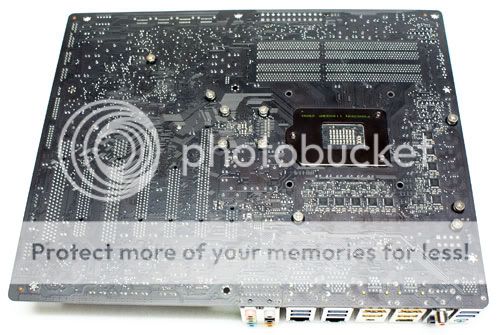
On the reverse you can see that only screws are used to hold the heatsinks down onto the motherboard, no plastic push-pins here! You can also see that the new matte black PCB from GIGABYTE is just that, black, without any ugly brown copper traces showing through. Brown showing through black makes me cringe when looking at other black PCB motherboards. GIGABYTE has the right idea with their implementation of black PCB, and it's nice to see they were thinking outside of the box and didn't just jump on the black PCB bandwagon without thinking ahead.


You can see the CPU socket area is designed with the largest of heatsinks in mind, I think almost any heatsink would fit into this area. In the bottom right corner you can see there is a debug LED on this board, and two front USB 3.0 connectors. There is no front panel USB 3.0 bay device included with the motherboard though, and I have yet to see any worthy offerings via retail channels. So I am unsure how end users are supposed to take advantage of this feature yet, but it is nice to know it's there for future use.


Here you can see the debug LED again, this is a very helpful feature when you are having POST issues. You can also see that this board has 8 internal SATA Connections. The 4 lower black ones are Intel 3GB/s ports, these are the ports that are affected by the B2 chipset flaw. The two middle white ports are Intel 6Gb/s port, finally! And the two top black ports are controlled by a Marvell 9128 6Gb/s chip.

The I/O panel is feature full! Offering a mouse or keyboard PS2 connection, 1 optical and one coaxial S/PDIF connector, two 1394a firewire ports, 6 USB 3.0/2.0 ports, 2 USB 2.0/1.1 ports, 2 eSATA/USB combo ports, dual LAN connections, and 6 x audio connections supporting up to 7.1 channel HD audio.











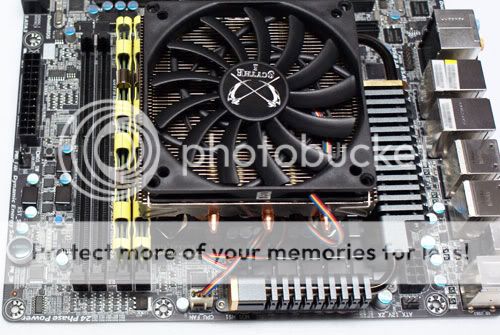













































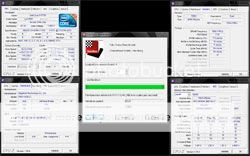




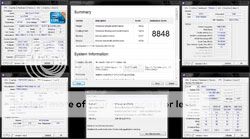
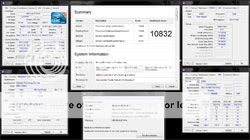









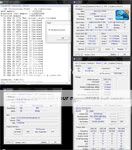































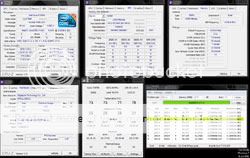



Comment